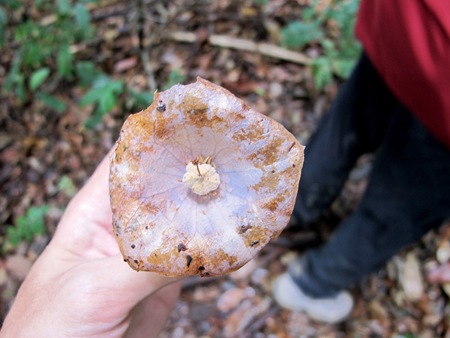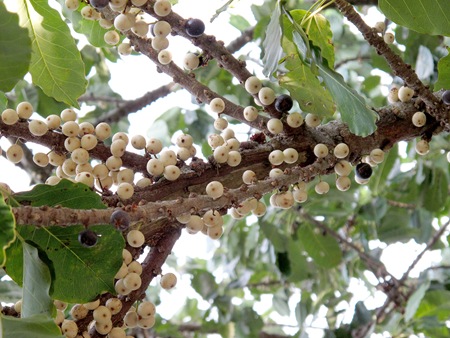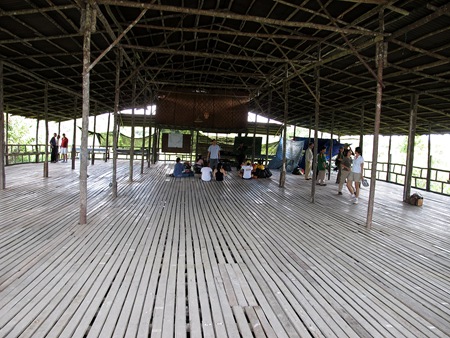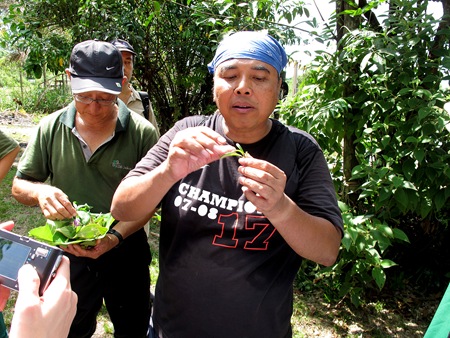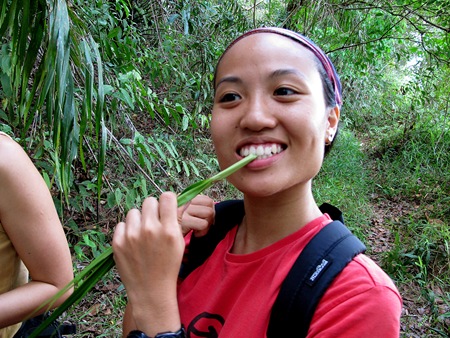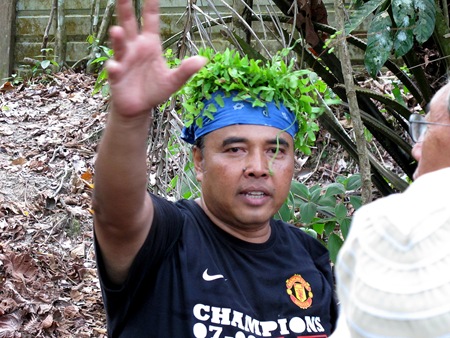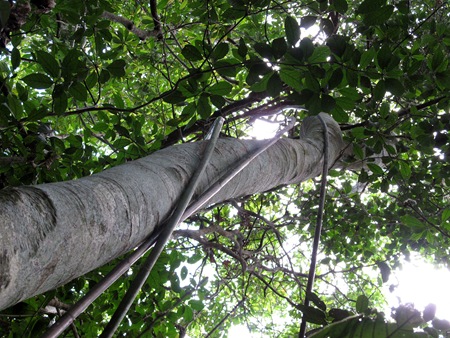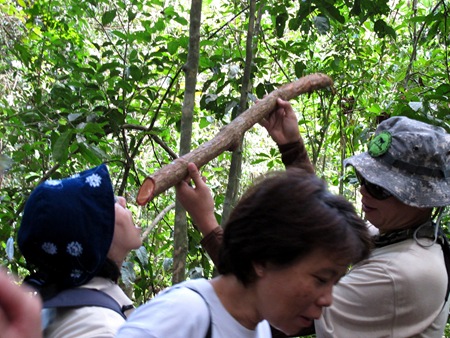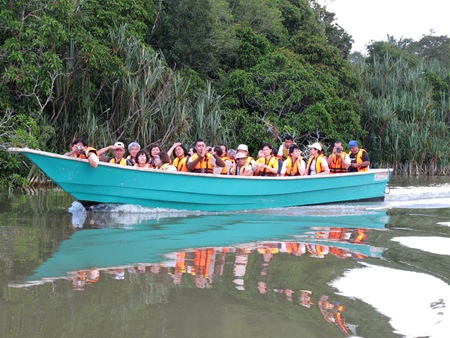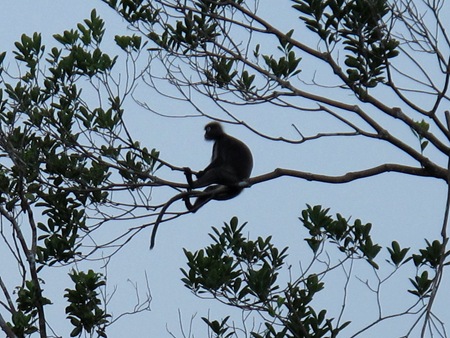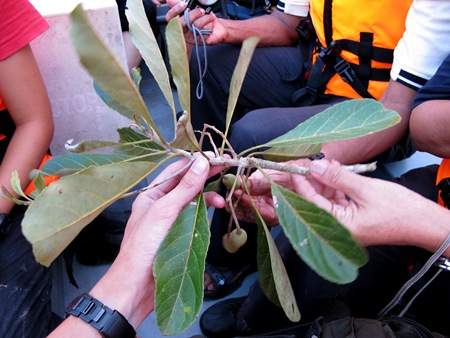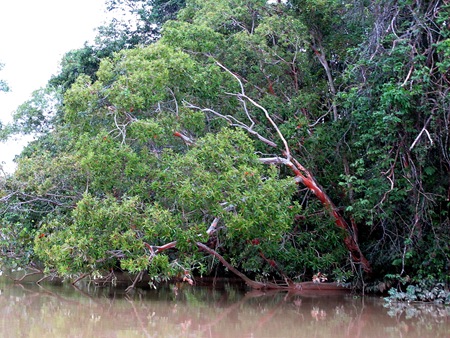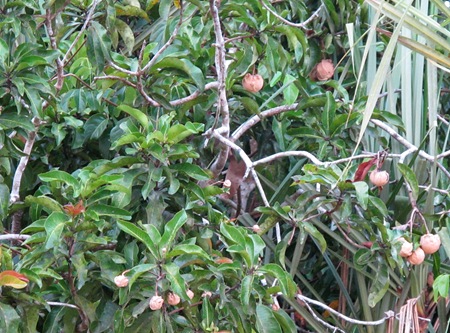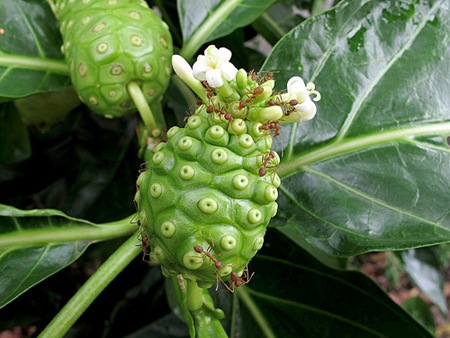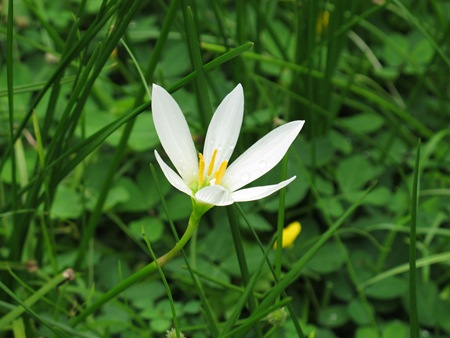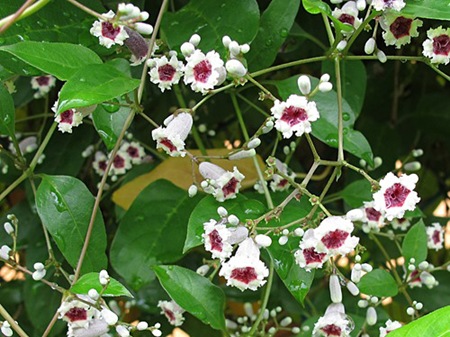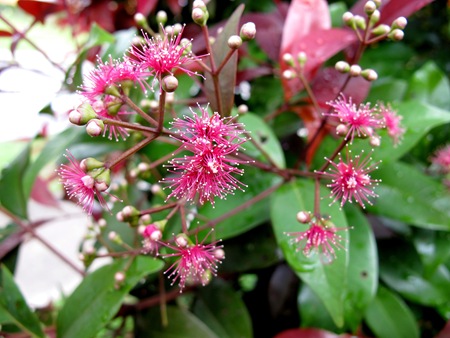The highlight of the entire trip was on the second day, where we were to conquer Gunung Arong, a 300m hill.
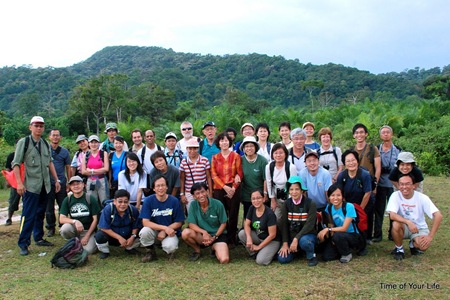
Here is a group photo just sent to us by Sutari.
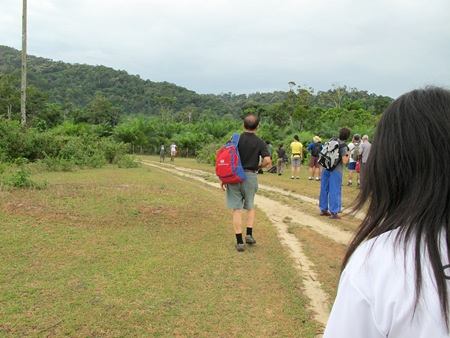
And here, we walked through the dirt path to the hill in front.

VB found this climbing fig which WF suggested to be Ficus trichocarpa. This fig is critically endangered in Singapore.

I saw this climber which looked like Monstera deliciosa, an exotic climber commonly cultivated in urban Singapore. Wondered why it is doing in a pristine forest like this.
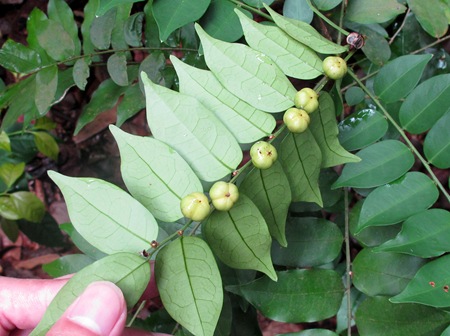
A cute shrub that resemble a Phyllanthus, probably from the same family at least, from its hanging fruits.

There were lots of this tree that bear brown flowers/fruits throughout the forest.
Unfortunately, nobody can place an identity on it. Update: Schoutenia accrescens

I was taught by the experts that this leaf is distinctive of Dipterocarpus costulatus with ridges like a corrugated cardboard and wedge-shaped leaf base.

We soon reached the top which was cleared of vegetation to provide a breath-taking view of the South China Sea.
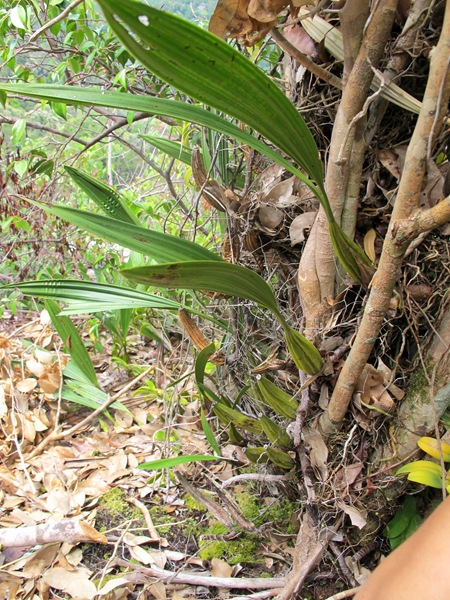
Orchids were plentiful at the peak.
AL told me that this orchid is probably Coelogyne fostermanii.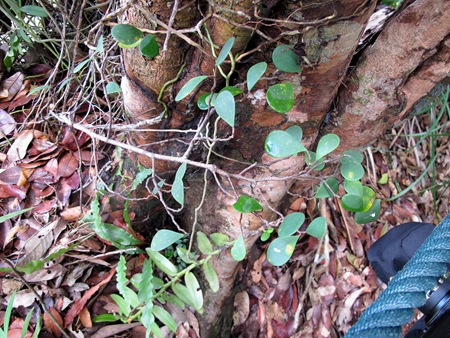
I was more excited to find another critically endangered fig of Singapore, Ficus deltoidea.
After seeing a few gigantic Shorea trees in front of us, Shawn Lum decided to estimate the age of the trees by measuring their diamater. He told us that this tree is at least 300 years old!

After a steep climb down the hill, we finally reached the base and the vegetation changes to a costal beach forest.

One of the several Hoya species we saw throughout the trip, this is probably Hoya verticillata.

There were also a few species which eluded even the experts like this climber above. Update: Salacia maingayi. ID-ed by SING herbarium.

Probably the prettiest flowers in the entire trip, from the Memecylon plant.

BH pointed out this Angsana tree, Pterocarpus indicus, living in its native habitat. This common roadside tree is an exotic species in Singapore.

Another critically endangered plant of Singapore, the Pong Pong, Cerbera manghas.
There were a few mangrove plants at the estuary, mainly making out of Lumnitzera littorea with flaming red flowers.
These mangrove rattans, probably Calamus erinaceus looked amazing at a far view though I wouldn’t relish bashing through them!

A simple bridge across the river gave me a huge relief as I had initially thought that I will have to wade through the water.

Looking back, it was quite amazing that we have walked up the hill to the peak and walk down to the other side.
Our last plant before boarding the bus was this figging Ficus superba!
All in all, a great learning trip with the right company and it was worth every penny paid.

